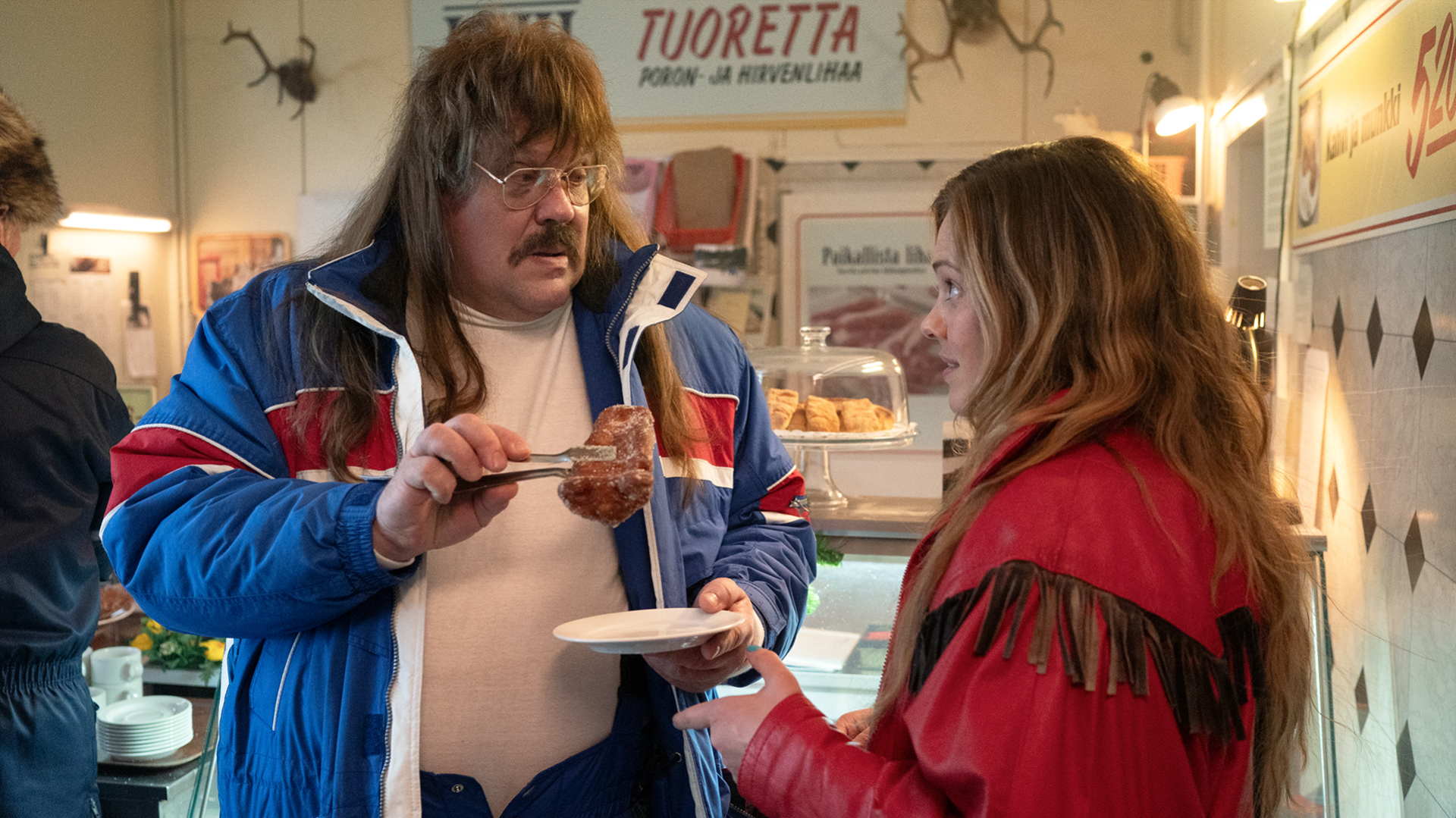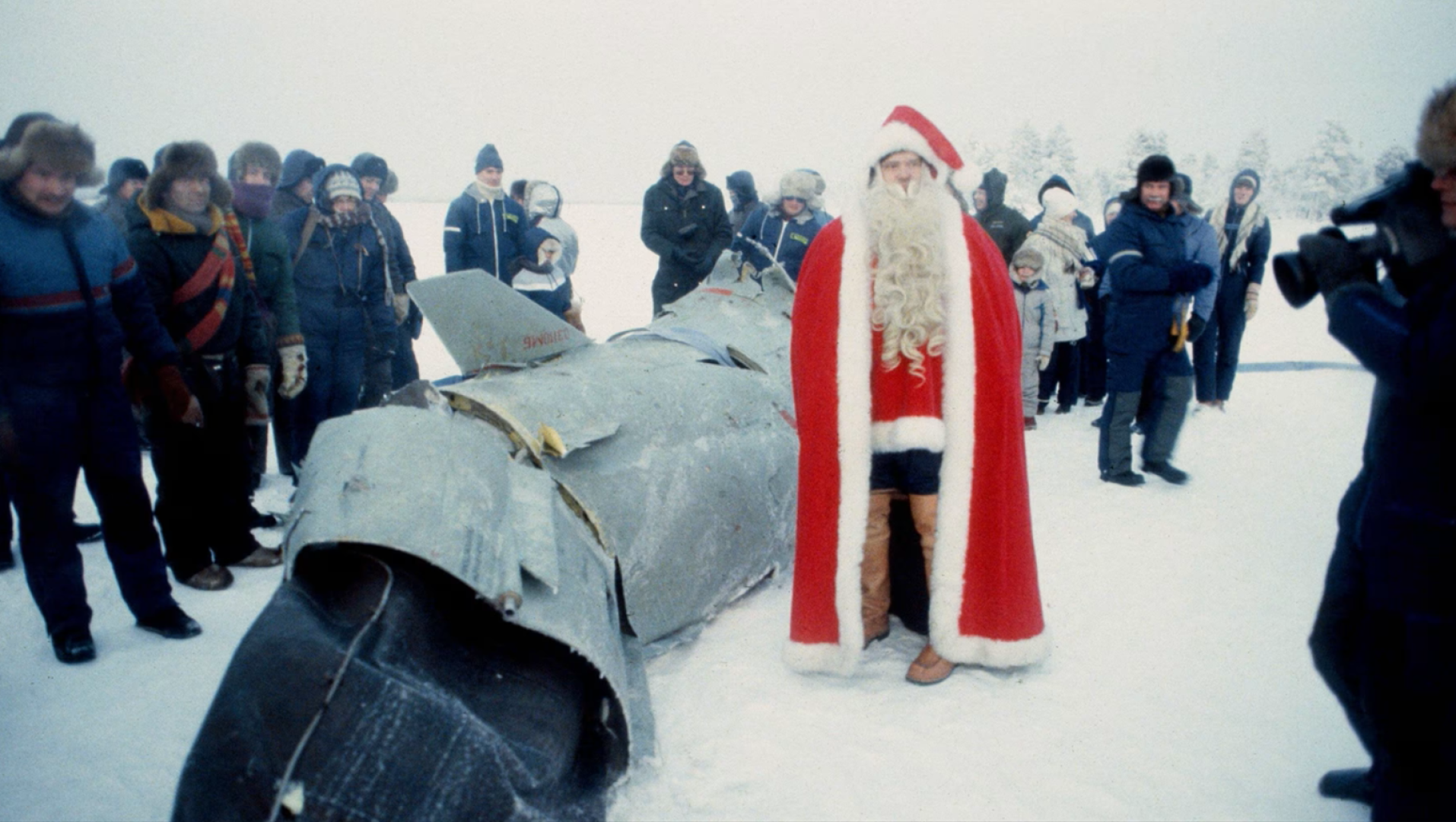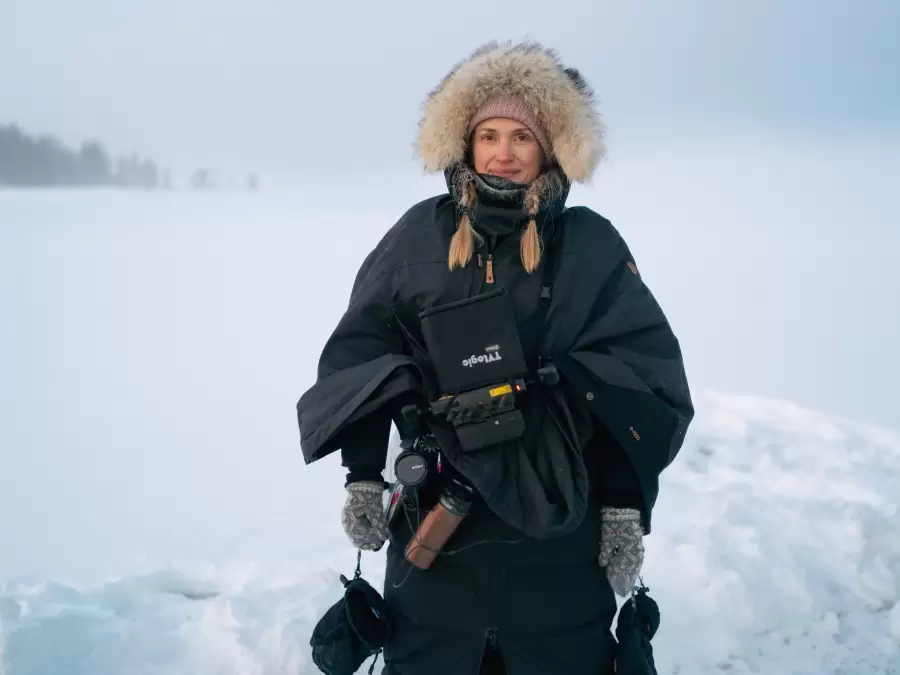Miia Tervo, born in 1980 in Muurola, Lapland, is an award-winning Finnish director and screenwriter, known for her sharp-witted stories that spotlight the culture and scenery of Northern Finland. Her debut film Aurora (2019) won several prizes and garnered praise for its depiction of love, identity and migration in the northern landscapes.
Now, Tervo has released a new film, The Missile (Ohjus 2024), which will open Finn Filmnapok, the Finnish Film Days, in Budapest in 2025. The story of the film transports the viewer directly to the middle of a blizzard in 1984, when a Soviet missile strayed over the Finnish border during military exercises. The film focuses on Niina (Oona Airola), a single mother of two and a journalist who sets out to investigate the events in her village. The missile incident works as the film’s backdrop, but around it is built a story of how local people experience fear and hope in the shadow of the great power politics. Although the film makes reference to the true events of 1984, Tervo's film focuses more on the human experiences and survival.
Tervo gave the interview on a snowy Tuesday morning from the Norwegian Tromsø International Film Festival, which she is attending with The Missile. The interview was already her second that day, but there was no lack of enthusiasm or things to say. Tervo is a real storyteller with whom the talk could easily go on for hours.
.jpg)
Director Miia Tervo at the set of The Missile. Photo: Sami Kuokkanen (c) Film production company Komeetta.
What inspired you to become a film director?
“My inspiration had many sources. I grew up in a poor family in Lapland, where becoming a film director felt as unlikely as qualifying to be an astronaut. I was in a good school, but I didn’t immediately know what I wanted to do. I started by writing poems and I realised I was an artist. In the end, combining visuals and words led me to the world of film. The first step happened when I saw the entrance exam questions for the film department at the University of Art and Design Helsinki, and got excited about how creative they were. In the entrance exams, I understood that film is my thing.”
You grew up in Lapland, in Muurola near Rovaniemi. Could you tell us something about your childhood environment?
“My background is a combination of the culture from Karelia and Lapland, which both are expressive and colourful. My childhood environment of Muurola was a special place, partly because of the mental hospital that was located there. I have always been surrounded by colourful personalities, which has influenced my film-making.”
“I just realised: s**t, but I can’t direct anything in summertime”
Tervo explains that Lapland is her “sielunmaisema”, that is, its landscapes hold a strong connection to her soul – which is why her films often take place in the region. Still, for her upcoming project she is researching new terrains, as the film might be set in Southern Finland and during the summer. Although the idea of a film set outside Lapland feels strange, Tervo sees it as an opportunity to grow as an artist and to challenge herself. “I just realised: s**t, but I can’t direct anything in summertime”, Tervo chuckles and adds that this is a new but interesting challenge for her.
Which films have inspired you?
“There were no cinemas where I grew up in Muurola, but our stepfather used to buy us films from the local kiosk’s clearance sale: for example, Stanley Kubrick’s 2001: A Space Odyssey (1968) and Sally Potter’s Orlando (1992). Inside the kiosk was always this local lass who sold candy and had a cigarette dangling from her mouth. I remember how all the film cassettes smelled of cigarette smoke when I opened the box. Today I am inspired by Sally Potter, Sofia Coppola, Greta Gerwig and Sean Baker, but I have to admit that the Muurola kiosk, the films and the tobacco-smoking seller have stayed with me and inspired my young self.”
.jpg)
Oona Airola at the set of The Missile. Photo: Sami Kuokkanen (c) Film production company Komeetta.
Tervo was especially moved by the Finnish crisis reaction – “despite the backdrop of a serious missile threat, doughnuts were still being baked”
The idea for the film The Missile, Tervo tells, took form during a conversation with friends at a bar. One of them mentioned the legendary events of 1984, when rumours of a Soviet missile plunging into Lake Inari sent the whole town into a frenzy. Apart from causing fear, the events also led to local curiosities being born, such as the sale of “missile doughnuts” in the middle of the crisis. There was something so absurdly humorous about the story that it came back to haunt the director. Tervo was especially moved by the Finnish crisis reaction – “despite the backdrop of a serious missile threat, doughnuts were still being baked”. She says that the film depicts a Finlandization process and self-censorship, but it also brings out something more sympathetic and human. Tervo spent months gathering background material, including interviews with locals, reading books from the era and researching articles. After this extensive background study, she concluded that “I suppose we should make something of this”.
What are the central themes in The Missile?
“The central themes are fear of violence and the experience of a sensitive, vulnerable woman in a violent world. I wanted to show how the fear of violence and the tensions between superpowers are seen in everyday life and in the emotional world of the individual. This point of view is especially important, since often films portray crisis situations through strong heroes – which doesn’t always reflect reality. In the film the world is examined through the eyes of a woman. I want to show that women have a right to agency even in the midst of violence and crises. Historically women have been excluded for example from military decision-making, but we should participate more actively given that we live in a shared world. The film is also a gift to men – my aim has been to cut through toxic ways of thinking and to awaken understanding.”
How do you develop characters and their stories in your films?
“I don’t use any particular method for developing characters. They just ‘come’ to me, and I picture them in my mind as a finished film. While writing I follow where the characters lead the story, and I try to not force them to any specific direction. My process is intuitive and spontaneous – the characters show the way.”
How was making The Missile different from making your first film, Aurora?
“The Missile was an international co-production with a larger budget, and is partly in English. In terms of dramaturgy and the script it is more complicated, and it deals with bigger and more difficult themes.”
What kind of response has The Missile gotten, in Finland and abroad?
“The film has been received really well both at home and internationally. For example, here at the Tromsø International Film Festival the Monday morning screening at 8.30 am was full, which surprised me. People were moved and appreciated especially the combining of comedy and tragedy, as well as the awakening of a 1980’s aesthetic through music and hairstyles. Many have thanked me for the film’s way of examining the world through a sensitive woman’s point of view.”
Oona Airola and Hannu-Pekka Björkman eating “Missile doughnuts”. Photo: Sami Kuokkanen (c) Film production company Komeetta.
How do you see the future of Finnish film on the international stage?
“I see a good future for Finnish film, but I am worried about the continuous cuts to the cultural sector. It’s a mistake to say that art or culture are “a luxury” or only the prerogative of the elite. Art belongs to everyone, and it’s a vital way of coming to terms with life and to process emotions. Stories, like films and theatre, have always been means of reflecting personal and collective experiences and of enhancing emotional well-being. Cuts from culture not only diminish the possibilities for creating art, but have long-term effects on public health and people’s ability to deal with their own internal issues.”
What kind of stories do you want to tell in the future?
“I want to tell stories that cleanse and excite and help us remember who we are. My goal is to empower people, help them to understand themselves and each other better, and to offer moments where they can grasp the importance of life. These are ambitious goals, but it’s for that very reason that making movies is so important. Art has the power to create meaning, and if I have the opportunity to make art, I feel it is my duty to do it in the best possible way.”
Our interview has been going on for quite some time, and now Tervo is crossing the windy, icy Tromsø Bridge on foot towards her next meeting. Even with a busy schedule, Tervo keeps talking. She gives a few more tips about film festivals, such as Skábmagovat, the world's northernmost indigenous peoples’ film festival. We stop the interview to allow for Tervo to order a taxi for the next meeting. I am left looking forward to Tervo's future projects and the stories that still await being told.
Who?
Miia Tervo
Occupation: Film director and screenwriter
Education: Film direction at the University of Art and Design Helsinki
Place of residence: Kirkkonummi
Hobbies: Yoga, skiing, ice swimming, crossfit and reading
A must-watch film for everyone: Stanley Kubrick: 2001: A Space Odyssey (1968)

Santa Claus next to the missile lifted onto the ice of Lake Inari. Photo: Heikki Sarviaho / Lehtikuva
Text: Saaga Kaján
Translation: Cecilia Fewster

